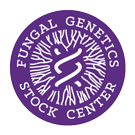Strain: Neurospora crassa
FGSC #4191
Reporting Genes: pan-1;uvs-2
Species: crassa
Allele: 5531;no#
Alternate Strain Number: M1385 a
Depositor: EK
Linkage Group: IVR IVR
Mating Type: a
ref1: Kafer 1982. Neurospora Newsl. 29:41-44, https://doi.org/10.4148/1941-4765.1645
Genes
